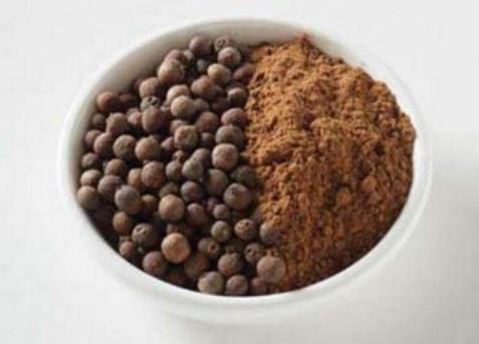For Better Health, Ditch the Salt!
and Say "Hello!" to Herbs and Spices!
We’re all pretty much aware that a diet high in sodium has a negative effect on health and leads to heart disease and kidney stress—in ALL people, not just the senior citizens. And so it’s always smart to seriously look at 1) how to reduce sodium intake and 2) how to prepare meals without it. This article discusses both ideas.

And just so you know, sodium consumption is on the rise—and so is heart disease and kidney troubles (in ALL people, BTW). The stuff is everywhere, and the food industry inserts it into just about EVERYTHING now. That said, here are 6 easy things you can do to reduce sodium consumption:
- Avoid adding salt to your food for two weeks and chances are good you won’t want it as much. After that, gradually decrease usage so your body gets used to less sodium and doesn’t crave it.
- Limit the amount and servings of processed foods such as fast food, canned soups and frozen meals.
- Reduce the amount of condiments you consume such as mustard, ketchup, dressings and sauces. Condiments are like salt-bombs.
- Eat more fresh fruits and vegetables and less canned foods.
- Eat lean ground beef, low-sodium processed meats and hamburgers from scratch.
- Flavor your food with spices, herbs, fruit juices and zest from citrus fruit.
The last idea is what we’ll look at now—specifically substituting herbs for salt in your cooking. On a very cool website, Exfatchicks.com, there is some great help with this topic. Their premise: “An important part of sticking to healthy eating is being able to create good-for-you meals that delight the palette.” Amen to that.
So they share specific ways this can be done without salt. Here are 5 herbs and a couple spices that if you can learn to use in your cooking, you’ll wonder why you ever needed a seasoning as mundane as table salt in the first place. The bottom line to it all? Practice, practice, practice to get it right. And the promise? Learning to cook with the right herbs and spices will not only result in healthier food—your food will be tastier (and even prettier) as well.

First, black pepper. It’s traditionally served alongside salt at the dinner table. However, it’s significantly healthier than its sodium chloride counterpart. Some studies have even shown that black pepper has antioxidant properties, and even has the potential to break down fat cells. Use it when cooking to season meats and vegetables and sprinkle it lightly over green, bean, and pasta salads. And as the photo suggests, grinding your own is a good thing—increased freshness means more flavor.

Next, thyme. Thyme is one of the most commonly used cooking herbs. It’s especially popular in Mediterranean, Italian, and French cuisine. There are 2 primary types of thyme used: common thyme and lemon thyme. They are both highly aromatic, slightly sweet, and pungent. As the name suggests, lemon thyme contains a hint of citrus flavor.
Use this herb fresh in roasting meats, poultry, or vegetables. The dried form works well also, but there’s more nutrition in the fresh, obviously. It goes well in stews, soups, and sauces. Thyme is often used in combination with marjoram, rosemary, parsley, bay leaf, and oregano.

And remember the allspice. Allspice, as the name suggests, smells and tastes like a combination of a number of fragrant spices, including cinnamon, nutmeg, juniper, and peppercorn. However, it’s actually derived from the dried berry of the Jamaican pimento tree. It’s popular in Caribbean and Latin cuisine and is often used with vegetables, soups, and even desserts. It’s also a key ingredient in classic Caribbean dishes such as jerk chicken and Jamaican beef patties.

Add nutmeg to the list. I use add it to oatmeal, cakes, quiche, and souffles. And like allspice, it’s really best when freshly ground.

Be sure to master cilantro. When fresh, it has a strong, pungent flavor that is unique and difficult to compare to any other herb. Fresh cilantro looks like parsley, and like parsley, it can be used dried as well (there’s MUCH less flavor in the dried, though). Cilantro’s distinctive flavor is a staple in many Latin, Asian, and Indian dishes. Learning to use Cilantro can give your dishes a strong, exotic flair. I always add it to our tossed green salads, along with fresh dill—the flavor punch is remarkable. And as the photo shows, it’ll keep best if you set your bunch in a glass with a little water and store in the fridge.

Finally, oregano. Oregano is one of the most widely used herbs in the world. It has a strong, slightly spicy flavor and a pungent aroma, and is probably most well known as the “pizza and lasagna herb.” While it’s known for its deliciousness in pizza sauce, it goes well with virtually any tomato dish and complements most vegetables and meats, especially lamb. Oregano is often paired with olive oil and seasoning partners such as onion, garlic, basil, thyme, and parsley. It’s just scrumptious in bean soups and artisan breads.
And with gardening season now here, you might want to grown a small herb garden, either just outside your kitchen door in pots on your windowsill. Always having fresh herbs handy means you’ll be more inclined to use them, and the effort is so worth it!
- www.caloriecount.about.com
- www.bigoven.com
- www.friedas.com
- www.ejozi.co.za
- www.toddsbbi.com
- www.de.wikipedia.org
- www.hipokrates2012.wordpress.com
 Alice Osborne
Alice Osborne
Weekly Newsletter Contributor since 2006
Email the author! alice@dvo.com
